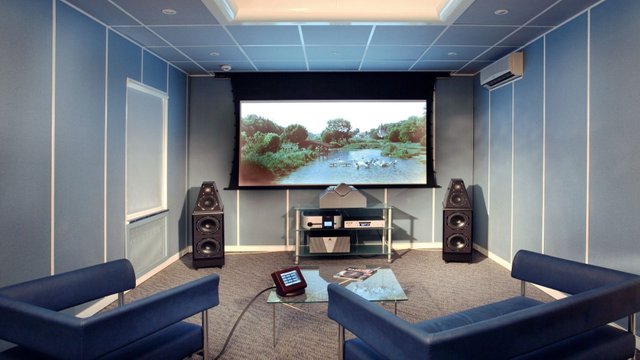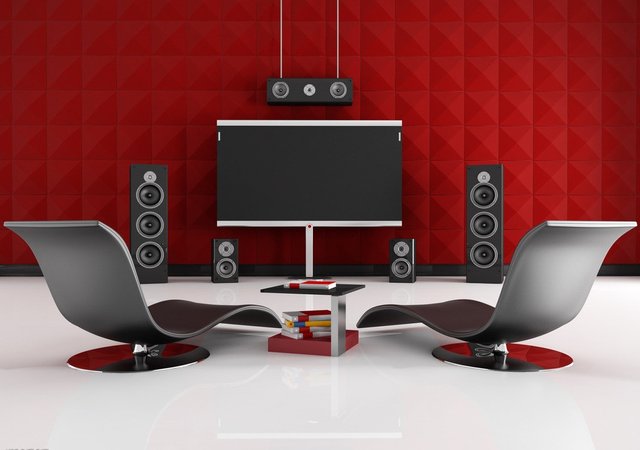The upper the resolution, the upper the image quality. Convert the Home into a Theater......

You discover the term resolution anytime you're sounding for a showing device. However what will it focus? In short, resolution is that the figure of pixels, from left to right and high to bottom, that build up your expected image. For example, a XGA 1024 constituent from aspect to aspect and 768 constituent from high to bottom that outputs 786432 pixels of information format. Additional pixels means that the next 'pixel density' and a slicker image. So, resolution means that to the quantity of lines of image showed on the screen. The upper the resolution, the upper the image quality.
SVGA (800 x 600 or 480,000 pixels)
• Lower costs than XGA.
• Good selection for PowerPoint shows.
• Best selection for presenting with SVGA computers. WSVGA (1024x576 or 589,824 pixels)
• Wide-screen version of the SVGA standard (800x600)
• Better selection than SVGA for prime definition video.
XGA (1024 x 768 or 786,432 pixels)
• Good possibility for people who area unit change a space with Associate in Nursing existing 4:3 screen.
• Better selection than SVGA for prime definition video and residential theater applications.
• •Best selection once exploitation older computers with the XGA resolution. WXGA (1280 x 800 or 1,024,000 pixels)
• Lower price house resolution.
• Same resolution of most new laptops.
• Best selection for business.
• Use with a 16:10 screen. SXGA (1280 x 1024 or 1,310,720 pixels)
• Excellent for people WHO desire noticeable excellent detail like graphic artists.
• Most excellent selection for key school applications (CAD drawings or medical display).
WUXGA (1920x1200 or 2304000 pixels)
• Flattering the typical for advanced-end notebooks and terminal computers.
• Used for mechanism projectors and large-venues that requires vivid, sky-scraping- definition content. HD projectors (1920 x 1080 or 2,073,600 pixels)
• HD projectors area unit the highest selection for house customers.
• HD projectors provide the leading complicated image for business, house of reverence and education applications. 4K (4096 x 2160 or 8847,360 pixels)
• Highest on the market resolution on the market.
• Minimal native 4K content exists.
• Price points too high for several customers.
If you're sort of a heap of oldsters going in projectors for the primary time, you'll be confused by the very fact that each projector has 2 separate specifications for resolution: native and most. Why two completely different specs, and what's the distinction between them?
It is truly pretty straight forward. Each projector that uses micro displays, whether or not they square measure digital display panels, or DLP or LCOS chips, incorporates a mounted array of pixels on those micro displays. That mounted array of pixels is understood because the native resolution of the projector. Thus native resolution is that the actual, true, physical resolution of the projector. The projector can never be ready to show additional actual pixels than it's on those panels or chips.
So then what's most resolution? Well, that variety has nothing to try and do with the projector's physical show. Instead it's to try and do with signal formats. Pc and video signals are available a large form of resolution formats. And each projector is programmed to acknowledge several of these completely different signals. Most resolution is that the highest resolution signals that the projector has been programmed to method and show.
Converting non-native signal formats to native resolution. When a projector confirms a proof that doesn't catch its native resolution, it should transfer that signal to the format of its native resolution so as to show it properly. This conversion method is usually said as scaling.
So as an instance, let's imagine you have got a video projector with a local resolution of 1280x720 that's able of displaying combine video 1080i signal. Meaning that the projector's physical ingredient matrix is 1280 pixels wide by 720 pixels tall. However, every frame of video in associate video 1080i signal contains 1920x1080 pixels that may be a heap over the projector has on its physical show. Thus so as to show the 1080i signal the projector should compress it into a 1280x720 format. It will do that as a result of it's been programmed to try and do the compression from 1920x1080 to 1280x720. What’s further, if 1920x1080 is that the maximum resolution that your projector has been produced to concede and squeeze into its native show, then 1920x1080 is realized since the top resolution of that projector.
Sometimes the incoming signal format is smaller than the native resolution of the show. As an example, let's assume you have got a native XGA resolution projector, and you're displaying a customary NTSC TV signal. During this case, your projector incorporates a native 1024x768 constituent array. However a daily NTSC TV signal is barely 640x480 pixels. that the projector should "scale" or expand that TV signal up from 640x480 pixels to 1024x768 pixels so as to show the image full frame.
Conversely, in our previous example, we tend to talked regarding changing a bigger 1920x1080 signal into a smaller 1280x720 show. Technically speaking, that's referred to as compression since you're pressure the signal to suit the show. However, it's less common to use the term compression currently. In characteristic usage, the term scaling refers to any alteration of a knowledge or video signal to a projector's native show format, whether or not it's being scaled up (expanded), or scaled down (compressed).
High or Low Resolution:
In printing, we have a tendency to need a 300 PPI image at 100% to get smart quality printing. Here is associate degree example of a prime quality 300 PPI file at 100%. Note the crisp detail. This image can look excellent once it's written. Below is an example of an occasional resolution 72 PPI image placed at 100%. This file will not look any higher once written Effective Resolution:
What's it and the way do I Figure it out? Effective resolution is just the ultimate resolution of any image at the particular scale that it's placed inside the document.
This is often very quite straight forward. If you set a 72 PPI image at 100% its useful resolution is 72 PPI. If you place it at 500 (half size) the effective resolution doubles and therefore the result's 140 PPI. If you set it at 25 the useful resolution is quadrupled and is then 288%. You'll confirm the effective resolution of a picture by dividing the particular image resolution by the size.
A projector is really a two-piece system: the projector and the screen. You can place a projector on a coffee table or out of view on a bookcase or shelf in the back of your room. Or you can ceil mount it.

Projector screens can be free-standing, wall-mounted, or retractable. You can omit the display and project cinema straight onto a wall. That generally looks OK, but a screen delivers a smoother, more reliable image.
Picture resolution can be 1080p HD or 4K Ultra HD, and Blue-ray capability is still popular.
Projectors don't include a built-in TV tuner, but they have inputs for connecting a Blue-ray player, satellite receiver or cable box, video game console, or media streamer.
Most projectors also have no way of producing sound. To watch a Blue-ray movie, connect your player's video output to the projector, and run the audio to an A/V receiver.
If you want to keep away from running cables from your video source(s) to a projector, believe a projector with wireless HDMI.
To give yourself more assignment options, appear for a projector with lens transfer. Lens budge allows you to progress the projected image up or down, left or right, while keeping the projector body motionless.
-----------------------------------
Congratulations @zahir959! You received a personal award!
You can view your badges on your Steem Board and compare to others on the Steem Ranking
Vote for @Steemitboard as a witness to get one more award and increased upvotes!